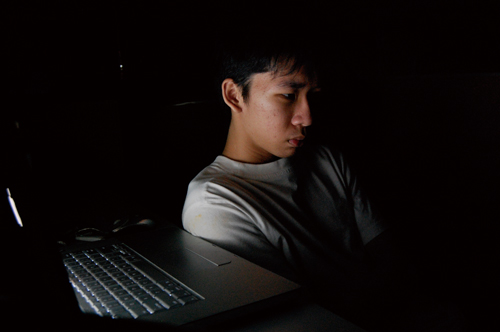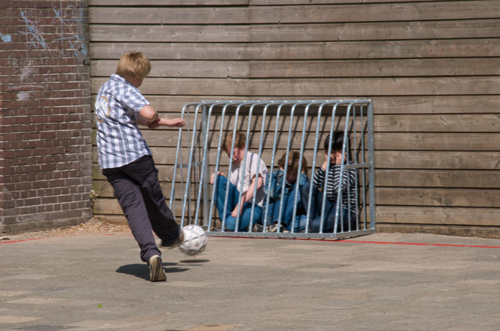
In an era where hurtful messages can be sent with a few strokes of a keyboard, it’s no wonder that bullying is on the rise. But how do you tell the difference between petty schoolyard taunts and real bullying? Just how harmful is bullying in the bigger picture? According to a study recently published in the American Journal of Psychiatry, bullying has health, social, and economic consequences that last into adulthood.
The study followed 18,000 people in the UK, Wales, and Scotland born in a single week in 1958. Researchers interviewed parents in the 1960s to find out if children were never, sometimes, or frequently bullied. They were assessed again at age 45 for depression and anxiety. When participants reached 50, those still in the study were asked to fill out a questionnaire measuring psychological distress.Researchers found that subjects who were bullied occasionally or frequently had generally poorer physical health, were at greater risk for anxiety disorders and suicide, made less money, and were more socially-isolated compared to the peer group that wasn’t bullied.
In late May, we visited Art Bug and spoke with Australian clinical psychologist Dr. Kristie Craigen following a series of talks she gave in Beijing. Based in Hong Kong, Craigen is the Director of Assessments at the Jadis Blurton Family Development Center and a consultant for the KELY Support Group, an acronym for Kids Everywhere Like You.
Supporting youth between the ages of 14-24 in Hong Kong, the NGO aims to better understand adolescent issues by addressing their underlying psychological causes. We spoke about the reasons why children bully and what students, parents, and schools can do to help.
Bullies: Menaces or Victims?
So why do kids bully? The reason has to do with power and imbalance of power, explains Dr. Craigen. Two examples that come to mind are the characters Biff from the popular 80s classic Back to the Future and Regina from Mean Girls. Dr. Craigen says there are generally two types of people that bully, and these two characters accurately represent each one:
- The “Biff”: In Back to the Future, Marty (played by Michael J. Fox) travels back in time to the 1950s, where he meets his dad’s high school bully, Biff. Biff verbally harasses Marty’s Dad, McFly, forces him to do his homework, and physically threatens him. “This type of bully actually has low self-esteem, poor relational skills, and they use bullying as a form of power,” says Dr. Craigen. “Often, they see it demonstrated in their own family, and it’s something that gets passed down.”
- The “Regina”: Though this infamous mean girl is conniving and cruel to her friends, she still manages to amass a flock of followers who give her the power she thrives on. “This type of bully is the opposite,” says Dr. Craigen. “This is the one that is really popular, is really concerned with maintaining that popularity, and would do that by any means.”
Though it can be easy to think the worst of bullies, it’s important to realize a person who bullies is often having problems of their own and can be seen as victims in their own way. “It’s advisable to have methods that incorporate intervention and therapy for both the person who bullies and the person being bullied,” says Dr. Craigen.
The rise of cyber bullying is fuelled in part by “Internet courage,” or the type of boldness that a person may exhibit while shielded by their computer screen. The same person may respond completely differently when physically confronted.
Coupled with Internet courage, Dr. Craigen thinks that cyberbullying is largely fuelled by entertainment value. “I saw some research that said 40 percent of Internet bullying occurs just because [the perpetrators]think it’s funny,” she explains. “People say things they probably wouldn’t in a social situation.”
In South Korea, a new rule was recently implemented requiring members to log in to websites using their government-issued ID numbers. “Something interesting occurred. Instances of bullying dropped significantly because people just don’t want to be identified,” says Dr. Craigen.
Responding to Bullies
What can a young person do if they or someone they know is confronted by a bully? In cases of cyberbullying, Dr. Craigen advises kids and teens not to engage or respond in kind with negative messages. “Don’t participate, don’t send on messages, and understand how doing so would affect somebody else.”
On the other hand, in instances where bullying is taking place in person, it’s helpful to be aware of the bystander effect, also known as the third party effect. The idea is that people standing by and watching are actually egging on the instances of bullying because they’re giving the bully, who is seeking power, an audience. In these instances, it can help if someone says something.

“There’s a lot of research that says as soon as soon someone speaks up, the incident will stop within ten seconds,” says Dr. Craigen. “It’s the same idea with internet bullying: someone saying something positive changes the theme. It just takes one person having the courage to show support. If they don’t, just choosing not to participate and perhaps even blocking the person who is doing it.”
Parents can also be more aware what their kids are up to online. Dr. Craigen suggests setting rules and monitoring online activity so that kids know what they can and can’t do. ”I know it gets difficult but there are ways, and you need to have some initiative in how you go about doing that. It also involves restriction if they have violated trust in some way.”
The School’s Responsibility
From a student’s perspective, confronting a bully can be quite intimidating. In some situations, the school getting involved could make the situation worse. “A lot of times, what [the schools]do is put the kids together and make them talk about it in front of each other. Can you imagine how gutsy you have to be to stand in front of the bully and report it? It must be like going to court and having your perpetrator standing right there.”
So how can schools handle bullying incidents? They can start by developing a comprehensive anti-bullying program and policy that involves education on the topic. Having given talks on bullying in schools and with parents, however, Dr. Craigen says these programs can be hindered by a lack of follow-up. “It’s ineffective unless it’s systematic across the board – the teachers and parents have to be involved,” she says.
Getting everyone on the same page is what the International Montessori School of Beijing (MSB) aims to do with the MSB Bullying Prevention Program for students in Grades 1-6.
“We implemented it by preparing the staff and the parents with workshops. They included teacher-parent specific information so everyone would be prepared to deal with questions from students,” says Learning Support Specialist and School Counselor Alexandra Schuur, who leads the program.
The MSB Bullying and Prevention Program includes elements from two other programs. First, it includes lessons based on Australian Education Consultant and Author Robert Pereira’s bullying workshops, which focus on the reasons why children bully. The second part of the program functions as a follow-up to check student understanding and is based on an Irish safety awareness program called Stay Safe.
“Lessons are split up into three sections and last an hour. The first ten minutes are set aside for discussing the meaning of friendship and bullying,” explains Schuur. “Students offer their knowledge and are allowed the opportunity to share personal experiences. The next 40 minutes revolve around a drawing on the board, which the children play out an age/gender specific scenario while I write out the character’s thought bubbles and verbal responses. Throughout the conversation, I ask the children guiding questions to keep them thinking about the next step.”
Through this exercise, students explore the situation from each character’s perspective as well as an outsider’s perspective. “They are effectively teaching each other what positive and negative communication looks like. At the same time they are, without realizing it, making agreements regarding what is appropriate and inappropriate behavior,” says Schuur. After each lesson, the classroom teachers are brought up to speed so that they can follow up with students.
With enough cooperation and education, the effects of bullying don’t have to last a lifetime. Dr. Craigen is hopeful that awareness for teachers, parents, and youth is the answer to decreasing incidences of bullying. “Naming it and creating preventative measures in schools is really going to help,” she says. “Maybe not all the time, but if you’ve got consequences and a policy around it, then people know that it’s taken seriously. It will have a positive impact.”

What to Do in Case of Cyberbullying
Cyberbullying is when a child, preteen, or teen is tormented, threatened, harassed, humiliated, embarrassed or otherwise targeted by another child, preteen, or teen using the Internet, digital devices, or mobile phones.
The incident must involve a minor on both sides, or at least have been instigated by a minor against another minor to be considered cyberbullying. For adults, the same acts are referred to as cyber-harassment or cyberstalking. If a child or teen becomes a victim of cyberbullying, parents should encourage their children to “stop, block, and tell” as detailed below:
Stop!
Don’t do anything. Take five minutes to calm down.
Block!
Block the cyberbully or limit all communications to those on your buddy list.
Tell!
Tell a trusted adult.
Source: Stop Cyberbullying (see Resources box below)
Resources
The International Montessori School of Beijing (MSB)
Bldg 8, 2 Xiangjiang Beilu, Chaoyang District (6432 8228, admissions@msb.edu.cn) www.msb.edu.cn 朝阳区香江北路2号院8号楼
The American Psychological Association (APA)
The APA provides comprehensive information on its website about measures that parents, teachers, and kids can take to prevent bullying. Visit www.apa.org/helpcenter/bullying.aspx.
The National Crime Prevention Council (NCPC)
Also offers bullying prevention resources, including articles about teaching kids about bullying, girls and bullying, and strategies for parents and schools to reduce bullying. Visit www.ncpc.org/topics/bullying.
Stop Cyberbullying
A website dedicated to preventing and raising awareness about cyberbullying. Visit cyberbullying.org.
This article originally appeared on p41-43 of the September 2014 issue of beijingkids. To view it online for free, click here. To find out how you can obtain your own copy, email distribution@truerun.com.
Photos: Wen Tong Neo (Flickr) Suzanne Goodwin Photography, Thomas Ricker (Flickr)



